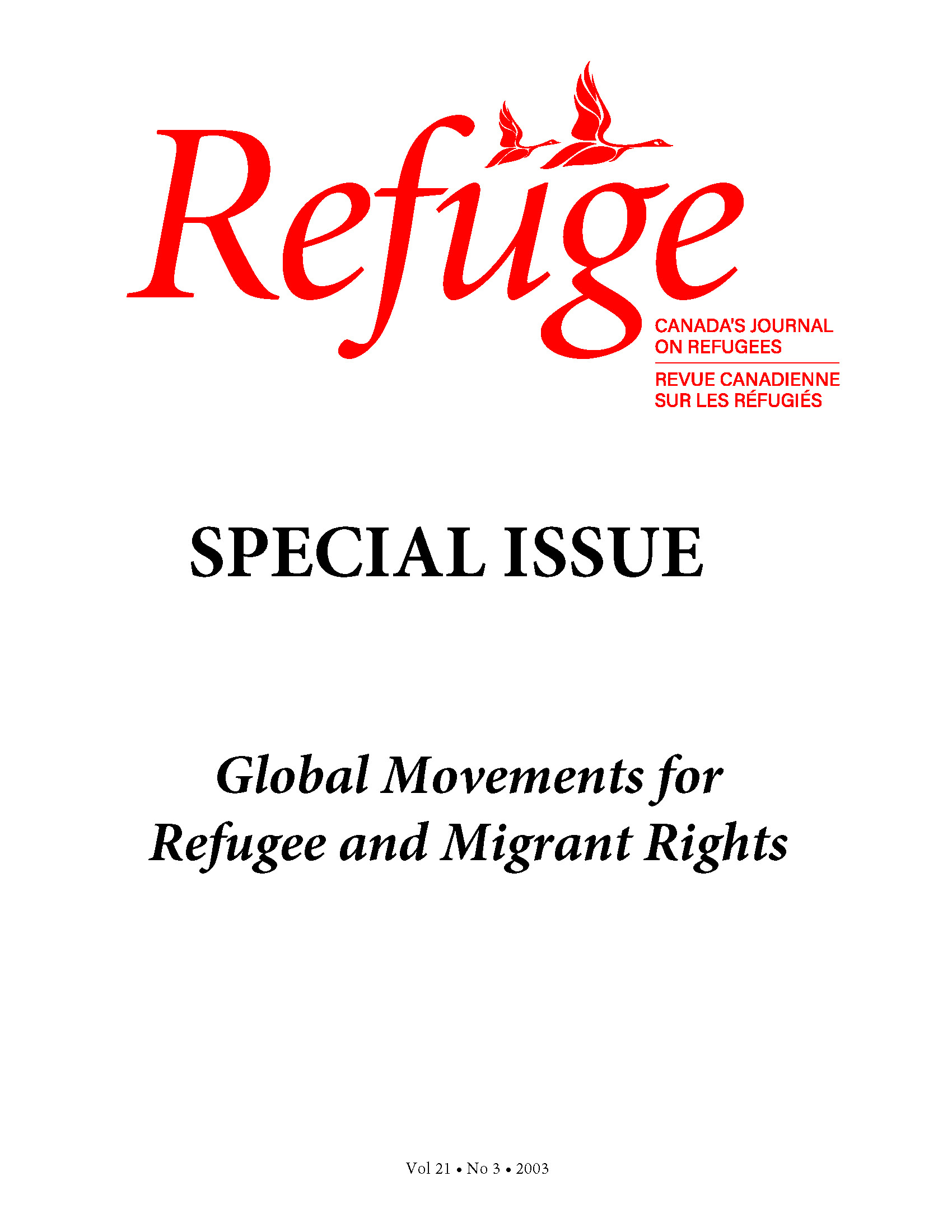“Disturbing Practices”: Dehumanizing Asylum Seekers in the Refugee “Crisis” in Australia, 2001–2002
DOI:
https://doi.org/10.25071/1920-7336.21301Keywords:
Australia, asylum seekers, irregular migrants, dehumanization, discourse, representation, family, children overboardAbstract
Throughout late 2001 and 2002, the Australian Government, seeking re-election, campaigned on a tough line against so-called “illegal” immigrants. Represented as “queue jumpers,” “boat people,” and “illegals,” most of these asylum seekers came from Middle Eastern countries, and, in the main, from Afghanistan and Iraq. This paper explores the way particular representations of cultural difference were entwined in media and government attacks upon asylum seekers. In particular, it analyzes the way key government figures articulated a negative understanding of asylum seekers’ family units – representing these as “foreign” or “other” to contemporary Australian standards of decency and parental responsibility. This representational regime also drew upon post-September 11 representations of Middle Eastern people, and was employed to call into question the validity of asylum-seekers’ claims for refugee status. Manufactured primarily through the now notorious “children overboard” incident, these images became a central motif of the 2001 election campaign. This paper concludes by examining the way these representations of refugees as “undeserving” were paralleled by new Temporary Protection Visa regulations in Australia.Metrics
Downloads
Published
How to Cite
Issue
Section
License
Copyright (c) 2003 Michael Leach

This work is licensed under a Creative Commons Attribution-NonCommercial 4.0 International License.
Refuge authors retain the copyright over their work, and license it to the general public under the Creative Commons Attribution-Non Commercial License International (CC BY-NC 4.0). This license allows for non-commercial use, reproduction and adaption of the material in any medium or format, with proper attribution. For general information on Creative Commons licences, visit the Creative Commons site. For the CC BY-NC 4.0 license, review the human readable summary.







